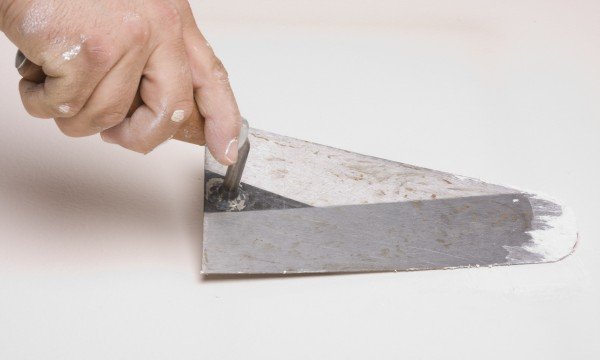Holes and blemishes on your walls can really make your home look older — whether it really is or not. To refresh your walls, consider patching and painting them. Here is a helpful primer on fixing and finishing your walls.

What you will need
- Narrow-bladed saw
- Pencil and level
- Straightedge and square
- Scrap lumber
- Drill
- Drywall screws
- Drywall patch
- Utility knife
- Filling compound
- Paper tape
- Filling knife and broad knife
- Drywall mud
- Sanding block and sandpaper.
1. Square up the damage
- Use your narrow-bladed saw to cut out a section of drywall that reaches to the edges of the studs on either side of the hole you’re working to patch.
- Mark your cutting lines with a pencil and a level.
- Use your square to make sure all of your corners are 90 degrees.
2. Prepare the studs
- Cut some pieces of scrap lumber so that they measure longer than the height of the newly-cut opening.
- Fasten these battens to the inside of the studs with drywall screws.
- Measure and cut a drywall patch with your utility knife and straightedge.
- If you managed to keep the piece of drywall that was around the hole intact when you removed it, go ahead and use it as a template for your patch.
3. Patch the hole
- Position your new piece in the opening, trimming it as necessary.
- Using drywall screws, fasten the patch to the timber battens.
- Apply a coat of filling compound over all seams with your broad knife.
- Embed paper tape in the applied compound.
- When the first coat dries apply a second coat that extends 15 centimetres (six inches) beyond the first coat.
- Sand your patch to finish it.
- If you’re happy with the finish at this point, move onto the next step.
- If you think your patch could be smoother, sand some more and then figure out if you need another coat of drywall compound (which you’ll need to finish off with more sanding).
4. Paint the walls
- Don’t just paint the area where you made your repair.
- Just painting where you patched will likely leave an obvious difference in colour between the existing walls and your patch.
- Paint the entire wall instead.
Keep this helpful primer in mind when you’re patching and painting your walls. Doing so will help you to better refresh your walls and your home.
